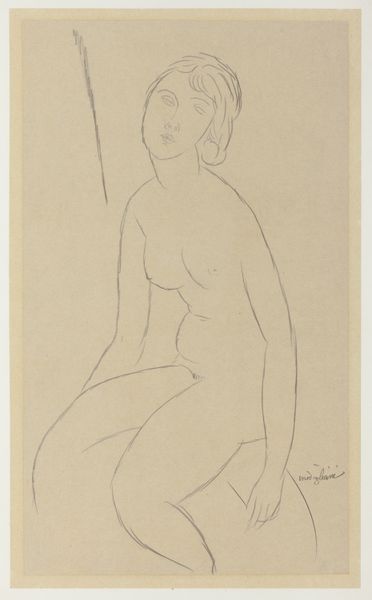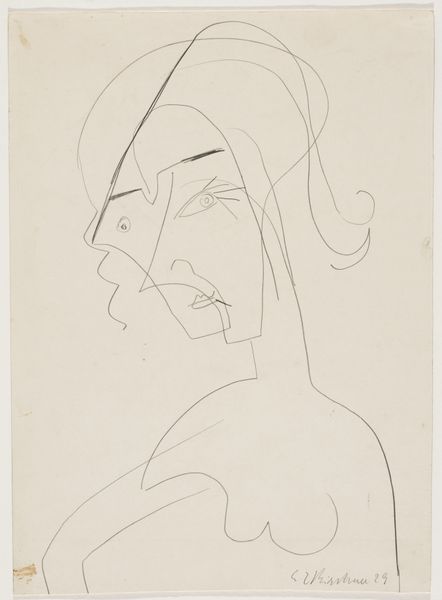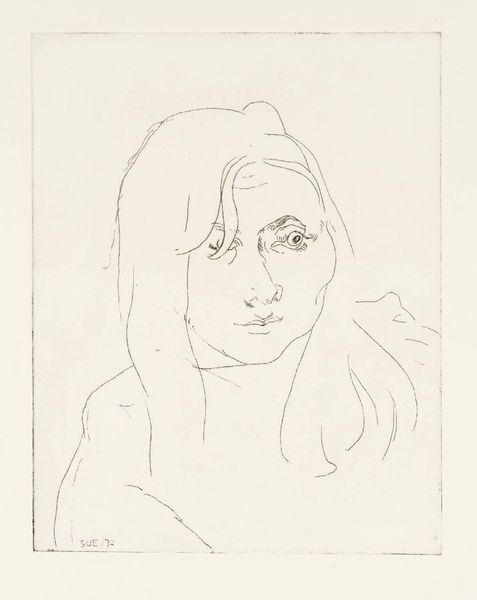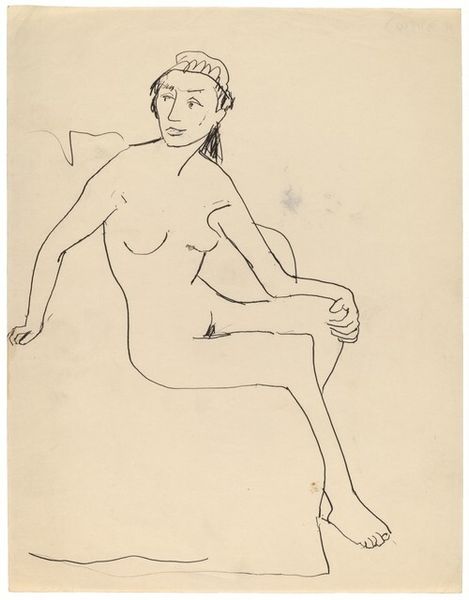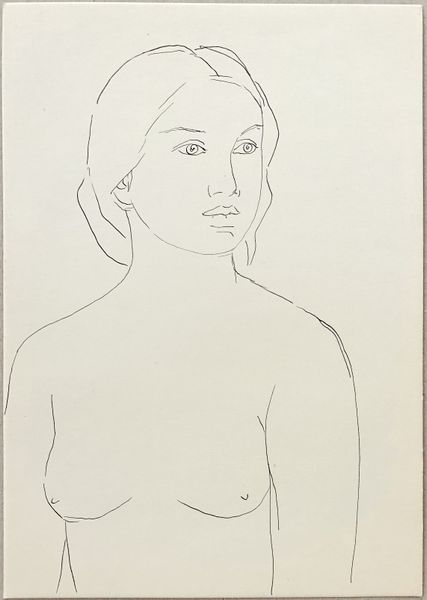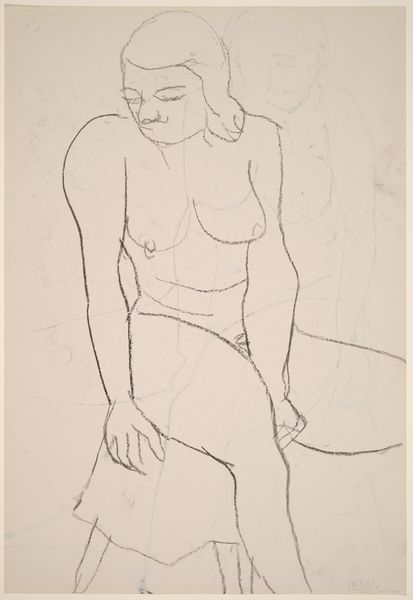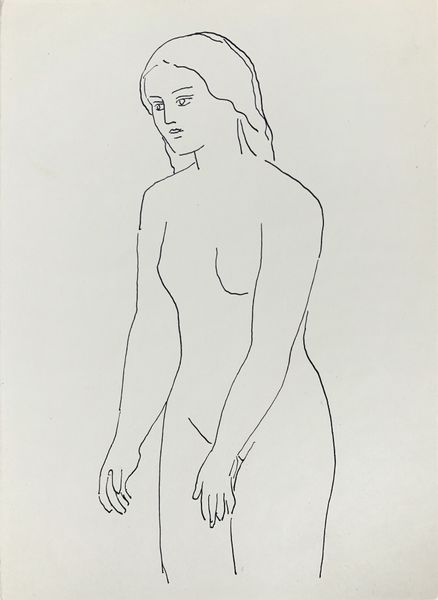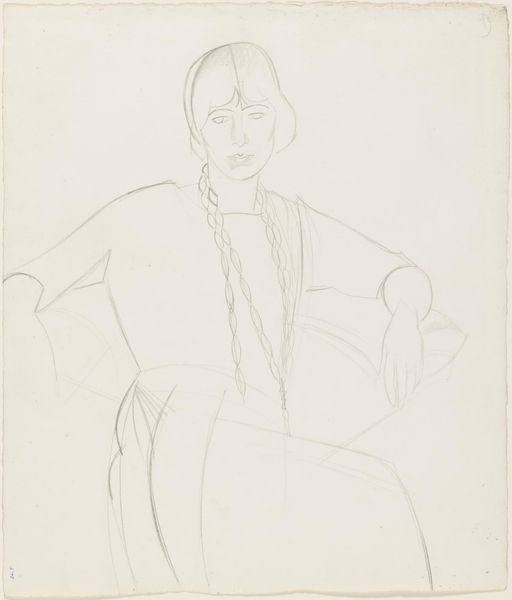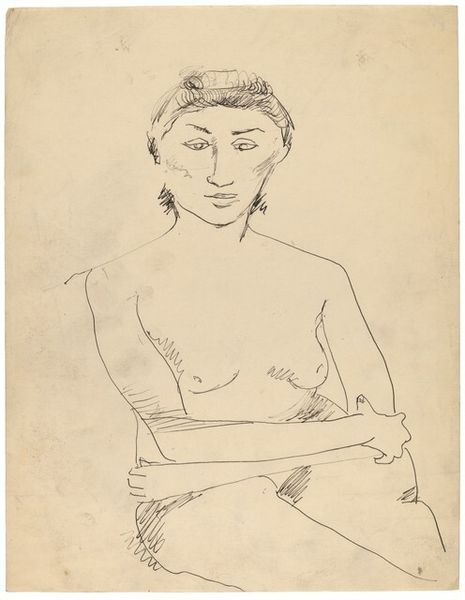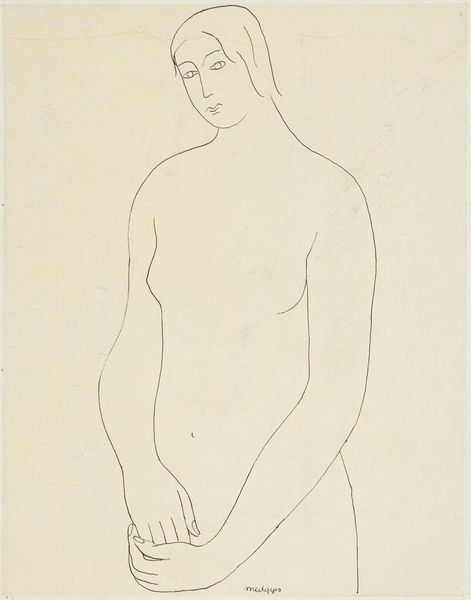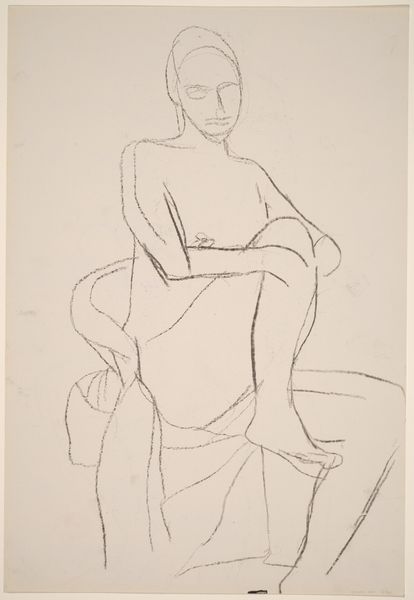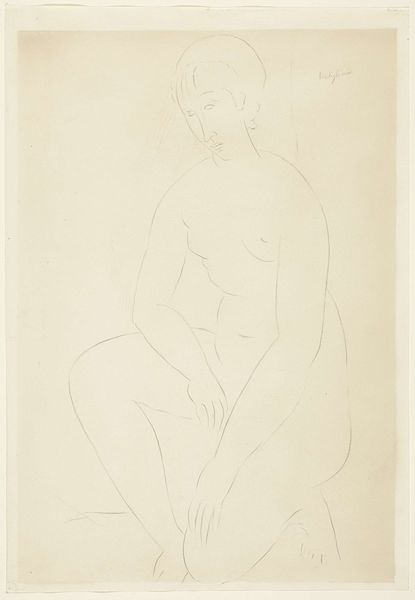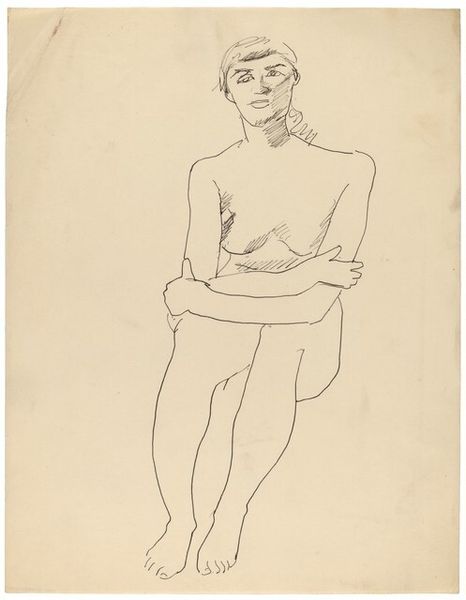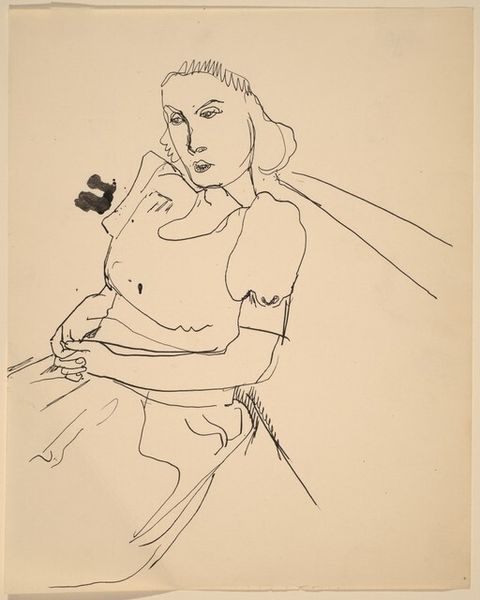
drawing, pencil
#
portrait
#
drawing
#
comic strip sketch
#
imaginative character sketch
#
cartoon sketch
#
figuration
#
personal sketchbook
#
idea generation sketch
#
ink drawing experimentation
#
pen-ink sketch
#
pencil
#
sketchbook drawing
#
portrait drawing
#
sketchbook art
#
modernism
Dimensions: height 212 mm, width 163 mm
Copyright: Rijks Museum: Open Domain
Editor: This is "Gezicht van een vrouw," or "Face of a Woman," by Leo Gestel, dating from 1891 to 1941. It’s a drawing, pencil and ink on paper, and it has a strikingly modern feel for something created so long ago. What strikes you when you look at it? Curator: It's intriguing how this drawing invites us to consider the shifting sands of artistic representation within its historical moment. Gestel straddled the line between traditional portraiture and modernist experimentation. Notice how the almost cartoonish simplicity could be seen as a critique of academic portraiture. Do you see any hints of social commentary embedded in the starkness of the lines? Editor: Social commentary? I hadn't really thought about that. It seemed more like a personal style choice, the quick strokes capturing an essence rather than a precise likeness. Curator: And that is indeed part of Gestel's artistic project, I would argue. But how do you think this move away from detailed realism might relate to broader social changes happening at the time? For example, consider the rise of photography. Did that influence portraiture as an artform? Editor: That makes sense. Maybe artists felt freed to explore different forms of expression since photography could capture realistic likeness. So, by moving away from that, he's participating in a larger cultural conversation about what art *should* be? Curator: Precisely. He’s also engaging in the political act of re-defining the art space and challenging societal expectations about who is represented in art. Think about who had access to portraiture previously – and who is excluded here. What is the effect? Editor: I hadn't thought of it that way before. It makes the work seem much more… deliberate. It's not just a face, but a statement. Thank you for making me aware of all that context! Curator: And thank you for reminding me of the simple power of line and form. Looking at it through your eyes makes me appreciate the freshness of Gestel's approach, even after all this time.
Comments
No comments
Be the first to comment and join the conversation on the ultimate creative platform.
